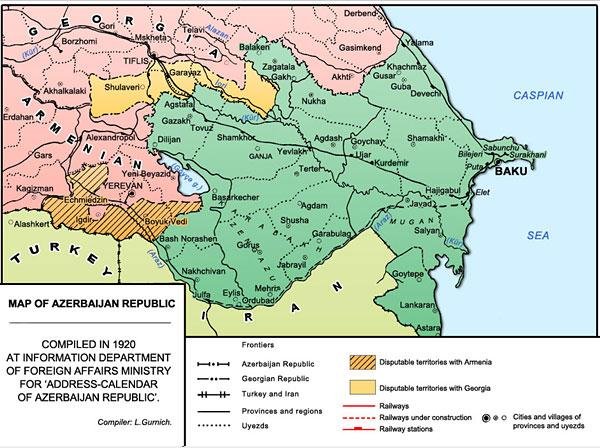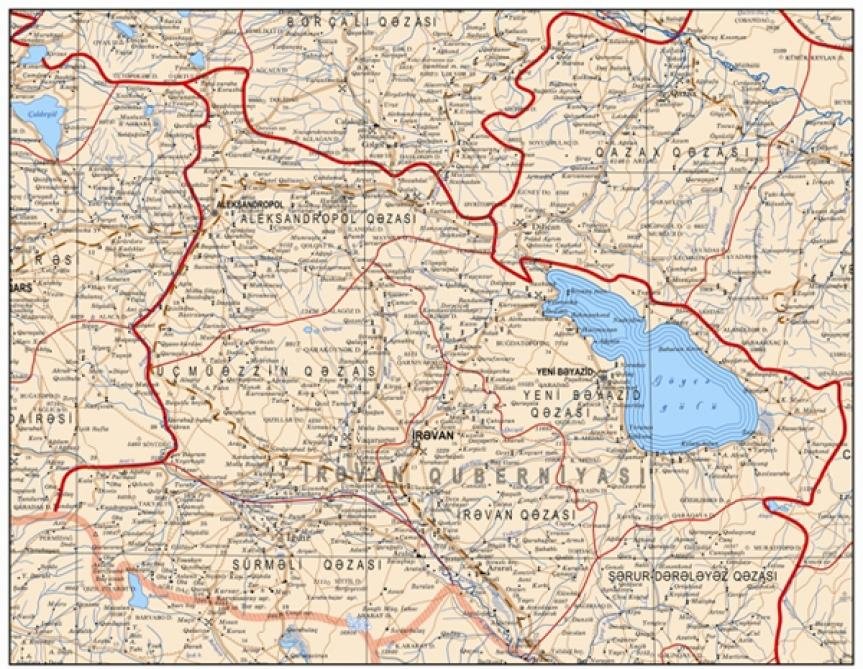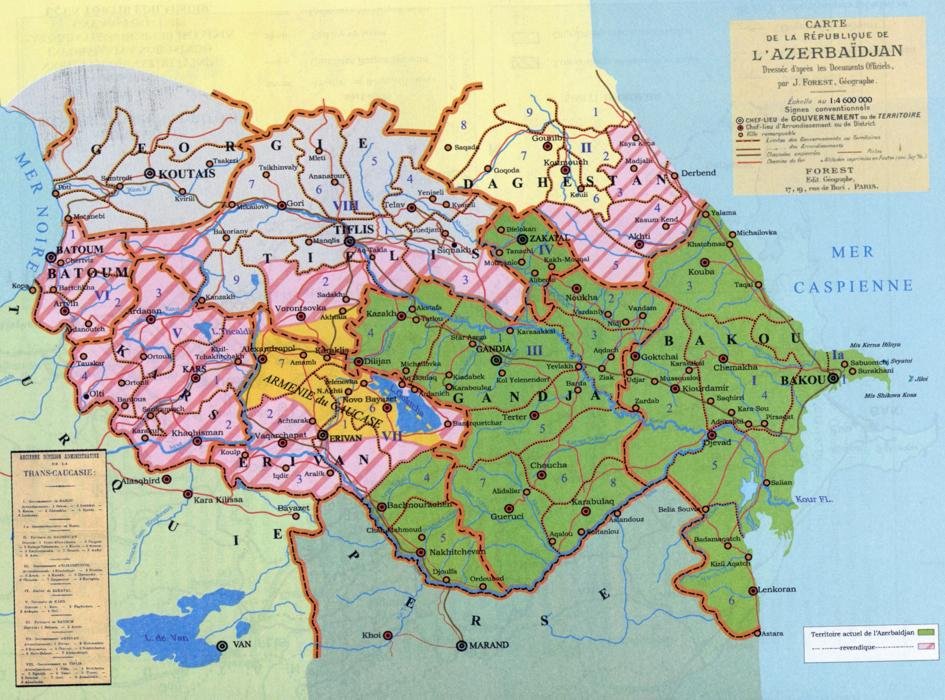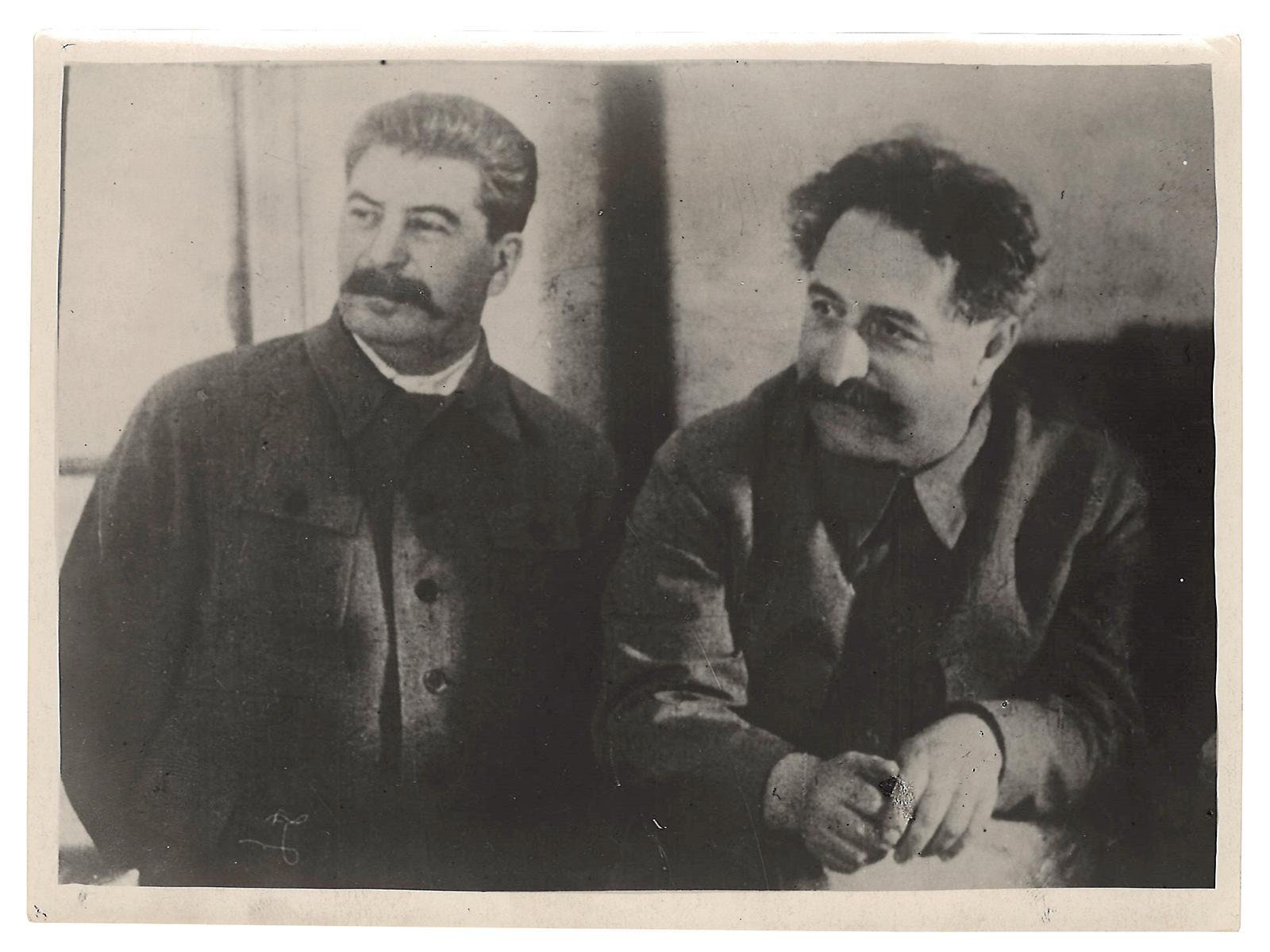Historical, political context of Zangazur's "handover" to Armenia Reasons and people behind land transfer
Azerbaijan's victory in the 44-day war with Armenia in 2020 has fundamentally changed the geopolitical realities, opening up new opportunities for the country's and the region's progress. After Baku, Yerevan, and Moscow reached a ceasefire deal that also stipulated the unblocking of critical regional communications in the near future, the term Zangazur corridor rose to prominence in Azerbaijan. Although the "Zangazur corridor" was not literally mentioned in the deal, Baku names the planned regional transport communications after Zangazur, the land inhabited by Azerbaijanis until their expulsion in 1988-89. Despite signing the agreement, Armenia continues to disrupt the process by claiming that it will build a regional road rather than a corridor.
Fear and hysteria in Armenia are undoubtedly related to Azerbaijan's use of the historical and geographical name Zangazur. Even though the corridor is not long and does not cover a large area on the global map, it is of great geopolitical importance and will have a potential impact on the region's transport communication architecture that has developed in recent decades.
Historical context
Zangazur is a historical region in modern-day Armenia and a small portion of Azerbaijan's territory in Zangilan, Gubadli, and Lachin districts liberated from Armenia's decades-long occupation in 2020.
The Zangazur region, inhabited by Turkic tribes, was part of the Seljuk empire during its 150-year rule in the 11th and 12th centuries, which expanded Turkish-Islamic influence within the region. Zangazur was invaded by Mongol-Tatar tribes and the Timurid Empire beginning in the 13th century. From the 15th to the 18th centuries, the region was a part of the medieval Azerbaijani states of Garagoyunlu, Aghgoyunlu, and Safavids.
There are specific, irrefutable facts and information about Zangazur being the land of Azerbaijan in Armenian, Russian, and Persian sources.
Demographic changes occurred in Zangazur during the reigns of Tsarist Russia and the Soviet Union. Around 500,000 indigenous Azerbaijanis and other Muslim locals were killed as a result of massacres committed by Armenian armed groups in Zangazur in 1905-1907 and 1914-1920. In those years, 115 Muslim villages in Zangazur were completely destroyed.

Gevork Aslan, an Armenian historian, writes: "Armenians have never had statehood, nor have they felt a sense of belonging or attachment to their homeland, nor are they linked to it through political ties. Armenian patriotism was only associated with the country in which they lived."
Conditions under which Zangazur was "gifted" to Armenia
President Ilham Aliyev repeatedly stated in early 2022 that Zangazur was severed from the rest of Azerbaijan and handed over to Armenia by the Soviet government in 1920.
"It is enough to inform the international community about the agreements signed in the 19th century - the Kurakchay, Gulustan and Turkmenchay peace treaties. There is no mention of an Armenian population in them. The Kurakchay agreement was signed by Ibrahimkhalil khan of Shusha and Karabakh - this was his official title. After the historical events of the 19th century, a process of resettlement of Armenians to Karabakh began en masse… It is a historical fact that Zangazur was severed from the rest of Azerbaijan and handed over to Armenia by the Soviet government in 1920… Zangazur was taken away from us in November 1920," Aliyev said.
Aliyev's remarks are substantiated by historical documents and evidence. Until 1920, Zangazur was mentioned as Azerbaijani territory in all international documents, maps and correspondence.

Professor of Diplomacy at Baku State University Dr Ismail Musayev writes that Armenia stepped up its territorial claims on Zangazur in the autumn of 1920. Under the guise of the introduction of Soviet power, Soviet Russia continued to take the Armenian position, paying scant regard to the Azerbaijani leaders' international outlook.
The professor confirms that Russia had planned in advance the transfer of Azerbaijani land, first of all, Zangazur, to Armenia and managed to do this easily.
On September 30, 1920, the National Council of Azerbaijan signed a treaty of military and economic union with the Russian Soviet Federated Socialist Republic (RSFSR). The Azerbaijani government hoped that by doing so, it would ensure the country's territorial integrity, establish joint socialism, and relieve pressure from Soviet Russia. To resolve contentious issues, the government had made some new proposals.
Several diplomatic documents show that Azerbaijani national interests were later seriously undermined and it was planned to give its historical land, Zangazur, Karabakh and Nakhchivan, to Armenia. At this time, the Russian government was operating on the basis of leading Communist Ordzhonikidze's thesis: "… we may need Armenia in certain political situations".
Russia's Eastern policy entailed using Azerbaijani land, particularly the aforementioned regions, as a "small change" in the Sovietization of Armenia. The slogans used by Soviet leaders in the region confirm this (initially "Only the Soviet government can ensure Azerbaijan's territorial integrity," but later "Only the Soviet government can return Zangazur to Armenia and make Azerbaijan give autonomy to Karabakh"), Musayev writes.
Moscow used "proletarian internationalism" propaganda to force Azerbaijan to make concessions. This issue was discussed several times at different levels. However, historian Zaur Aliyev writes that it was impossible to save this region.
On November 30, 1920, shortly after Bolshevik forces subjugated the Azerbaijan Democratic Republic on April 28, 1920, a large portion of the Zangazur region was ceded to the newly-established Armenian SSR. Under the decision of the joint meeting of the political and organisational bureaus of the Central Committee of the Republic of Azerbaijan, 3.105 square versts of the Zangazur region remained within the Azerbaijan SSR, while 3.637 square versts were given to Armenia. As a result, Nakhchivan became an exclave distinct from the rest of Azerbaijan. The Armenian SSR's territory was divided into districts in 1933, and the name Zangazur was replaced with new district names such as Gafan, Gorus, Garakilsa (Sisian), and Mehri.

To recap, before Zangazur, Iravan was ceded to Armenia on May 29, 1918. The city's annexation by Armenia has had an impact on its indigenous Azerbaijani population as well as Azerbaijanis' cultural heritage. There were over 373,000 Azerbaijanis living in Iravan in 1916, but only 12,000 Azerbaijanis were registered in census files in 1922.
Several expulsions of Azerbaijanis from these territories occurred during the Soviet era. Azerbaijanis living in Zangazur, Goycha, Daralayaz, Iravan and Vedi (present-day Armenia) were forcibly removed from their ancestral lands in 1988.
Following the brutal displacement of Azerbaijanis through acts of terror and ethnic cleansing, hundreds of historical, material, and cultural monuments belonging to Azerbaijanis were destroyed.
During Armenia's state-run ethnic cleansing policy in 1988-1989, more than 250,000 Azerbaijanis were deported from Zangazur, Iravan, and other regions. In modern-day Armenia, there is not a single ethnic Azerbaijani.
Who was behind the land transfer
The decisions of the 30 November meeting of the Central Committee of the Azerbaijani Communist Party (Bolshevik) were of great "service" in giving part of Zangazur to Armenia. The ethnicity of the participants in the meeting must also be taken into consideration in attempts to explain these decisions. They included Ordzhonikidze (Georgian), Sarkiz (S. Ter-Danielyan - Armenian), Y. Stasova and G. Kaminskiy (Russian) and Nariman Narimanov, A. Garayev and M. Huseynov (Azerbaijani), Professor Ismayil Musayev says.
He underlines that "many archive documents confirm that [Soviet leader Iosif] Stalin played a major role in the division of Azerbaijani territories".

Political analyst Ilgar Valizada stresses that Zangazur was split into two parts under the pressure of Soviet Russia's Foreign Affairs Commissar Chicherin, Lenin, Stalin and Ordzhonikidze as soon as the Soviet power was established in Armenia at the end of 1920.
Under the auspices of the Soviet Empire, Armenia captured another 20 per cent of Azerbaijani territory in the early 1990s. Unlike in the past, this time it was done openly with the force of arms and unprecedented brutality. Our lands had been occupied for 30 years, and our towns and villages had been razed to the ground. Azerbaijan restored its territorial integrity thanks to the victory that Azerbaijani Army won in the fight against occupants during the 44-day war.








